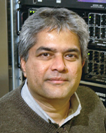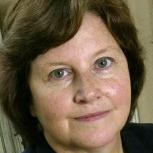The mission of the Department of Engineering is to address the world's most pressing challenges. Its research divisions work within three main themes: engineering for life sciences (for example, the development of new medical imaging materials and biomaterials, such as replacement bone), cognitive systems engineering (such as speech recognition) and sustainable development (water and sanitation and renewable energy). Specialist inter-disciplinary centres have been set up within the Department to collaborate with industry. They include: the Centre for Advanced Photonics and Electronics (a collaboration with industry to invent electronic and photonic materials); the University Gas Turbine Partnership (a joint project with Rolls Royce); and the Institute for Aviation and the Environment. During 2009-10 the Department is managing the AIM Network - an international network of academics and industrial researchers applying non-modal stability analysis to industrial problems. The network uses web-based resources that were originally pioneered for undergraduate teaching. These include template computer code and video tutorials that can be downloaded and adapted by network members as well as a wiki and discussion boards for on-line interaction. The network has already led to a £1m joint Indo-UK research proposal and a number of visits between the two countries. The work arising from this could change the way that engineers design fluid mechanical systems, such as combustion chambers, wind turbine blades, industrial reaction chambers and ink jet printers.



